History and Heritage
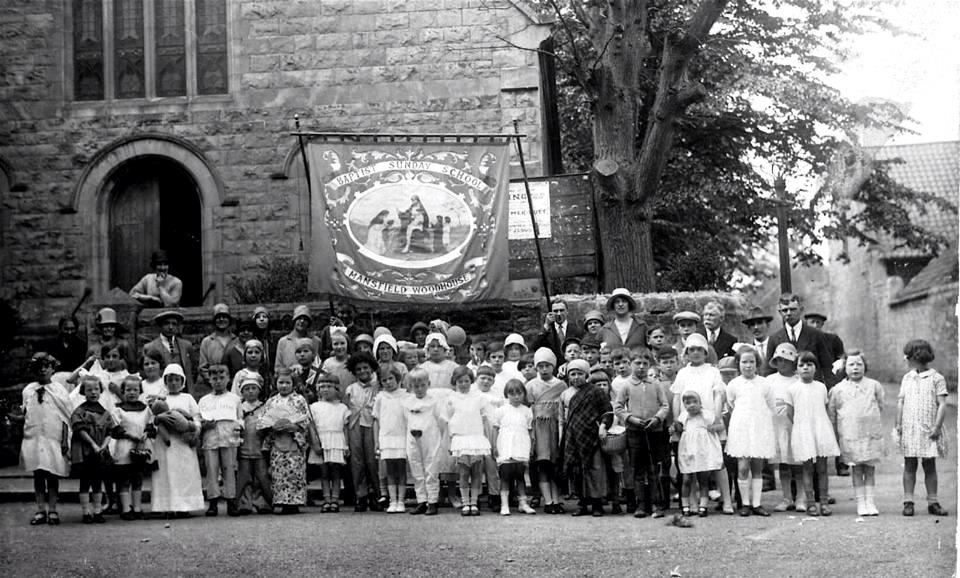
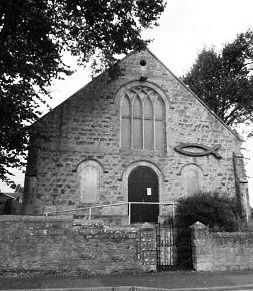
Churches of Mansfield Woodhouse
Churches and Religious Institutions in Mansfield Woodhouse that have been either lost, demolished or reused.
There have been several churches built through the centuries at Mansfield Woodhouse. Those that remain open and moving forward include the parish church of St Edmund’s, King and Martyr, Peafield Church, Trinity Methodist Church and The Christadelphian Church as well as St Chad’s Church in Pleasley Vale.
But for the purpose of this article I want to concentrate on the churches that we have lost or that have been demolished or reused in some way.
Baptists at Mansfield Woodhouse had for many years formed ‘house groups’ for they were without a building to call their own. But in the 1870s a stone fronted building on Albert Square affectionately called the ‘Corner End Chapel’ which had been built for another denomination became available and for some 30 years they worshipped there. It was able to accommodate 150 people. By 1905 the congregation had swelled to such a point that a larger building was desperately needed. So much so that a small shop next door to the church was rented as a Sunday school. Plans were made and a plot of land on the corner of Park Road and Slant Lane was purchased from the Duke of Portland for £300 and John Ashley’s firm built the church at a cost of £1,000. The foundation stones there are inscribed with names including — G Stevenson JP, Mrs J Ashley, J E Alcock JP, Ms J Wilcox, Miss A Ashley on behalf of the Young Women’s Bible class, Mrs H Ashley, Miss Mapletoft, Mr J Ashley on behalf of Sunday School, Mr H E Hollins, Louis C Ashley, Miss E A Boulton, W Wilson and family, Miss Jackson. The rest I cannot decipher. The church was dedicated in July 1905.
The Sunday school produced a small pocket sized calendar in 1952 to raise funds for a new boiler.
A new baptistery was built in 1975 to celebrate the 70th anniversary.
Pastors who have served at Mansfield Woodhouse Baptist Church include Henry Marsden, Alfred Firth, Harry Green, Paul Bailey, Sid Blythe, Mike Klein and G Brindley-Mayne.
Incidentally Pastor Harry Green was a founder member of the Sunday evening services held at Debdale Hall Recovery Hospital.
The church was subject to so much vandalism and by 1996 it had closely completely and was bricked up to avoid further vandalism.
The Christadelphian Church also called The Church of the Brothers and Sisters in Christ took over the former Baptist Church on the corner of Slant Lane and Park Road in 1998 and completely refurbished it.
Looking at the First Edition Ordnance Survey map of 1877 a Free United Methodist Church is in evidence on Albert Street. By the time the Second Edition OS map was published in 1899 the same building is marked as an Independent Methodist Church. Wright’s Trade Directory for 1888 records William Clarke as a steward for the Primitive Methodist Church. Could this be the same building?
But Primitive Methodists wanted a larger building capable of seating more people and a site was purchased for £410 on the High Street near The Beeches. Churchmen helped to pull down cottages which stood on the site and to clear away the rubble. Mr F P Cook was the architect and Mr John Ashley the building contractor, the amount of the contract being £1,200. The front of the building was to be of stone and the remainder in brick. Foundation stones were laid in the Spring of 1902 by Major General Coke, Mr A B Markham, MP, Mr H E Hollins, Mr Metcalf, Mr and Mrs J G Marriott (Sheffield), Mr J G Smith, Mr J Chipp (Brighton) Mr William Lowings, Sheffield, Mr J Jennings, Mrs Smith and family, Mr George Limb, Mr Frank Rouse, Mrs Wilson, Mr George Owen on behalf of the trustees, Mr William Robinson on behalf of the Sunday school, Mr A Chipp on behalf of the Band of Hope, Mr F Wilson on behalf of the choir, Mr B Johnson on behalf of the Young Men’s Bible class. The date stone on the front of the church clearly shows 1902 and below that are the words carved in stone that read Primitive Methodist Church. It was affectionately known as ‘The Prims.’ It is thought most probably that Primitive Methodist Church was renamed Christ Church after Methodist Union during the 1930s.
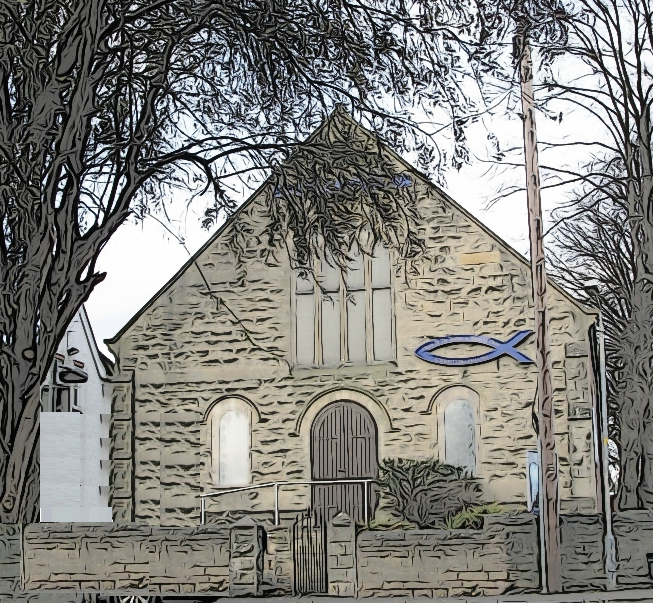
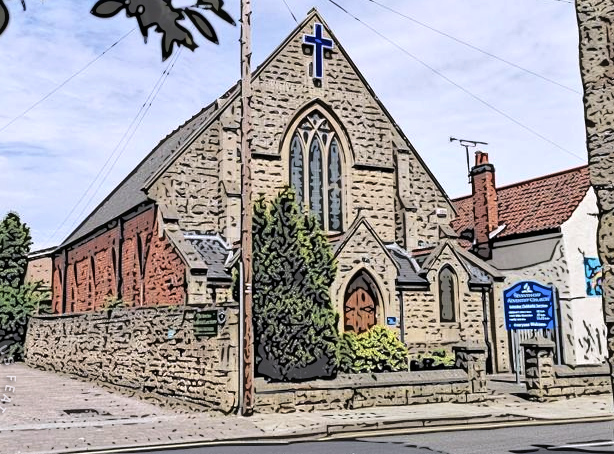
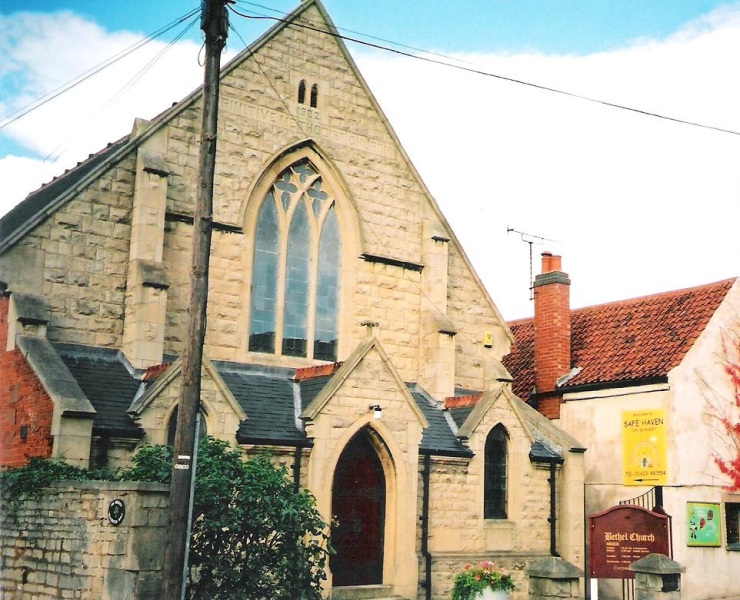

In the early 1970s Maureen Arnold, nee Pitchfork, a former Commonwealth Games swimmer took over the by then disused church and created a 20-metre swimming pool there called The Kingfisher Swimming Pool. It was made of canvas and was supported by a metal structure. Some years later it was a carpet storage facility and by 1982 was re-opened as the Bethel Interdenominational Church.
Bethel Interdenominational Church moved from its origins in a small mission on Grove Street to the church on the High Street in 1982. It was renovated and extended at a cost of £95,000 and could accommodate 500 people. Leading the congregation were Pastors John Hibbert and Stephen Jeffs. Pastor Hibbert is a published author of books including ‘The Virgin and the Dragon’ (about the life of the Virgin Mary) and ‘We Are Brothers’ (about the life of Abraham). It later became known as the International Church and plans were made to further extend at its High Street location. But then their attention turned to a site in Rock Valley at Mansfield which could have accommodated many more people. However, after falling into financial difficulties in 2018, the High Street church was put up for sale at a guide price of £350,000 and purchased by The Church of the Latter Day Saints.
The Salvation Army took rooms in Albert Street and established a Corps there in about 1898 with Captain Peek (some sources spell his name as Puck) at its helm. The building has since been used as a place from which to sell fireplaces and shoes, as an art gallery, and by the Royal British Legion and is part of a listed group of houses now.
Community Church Christian Fellowship was led by Karl Boothby and met for their fourth birthday celebrations at Trinity Methodist Church in 1991. They continued meetings at the Meadows Centre on Slant Lane and Mr Boothby left after 10 years at the helm in 1997.
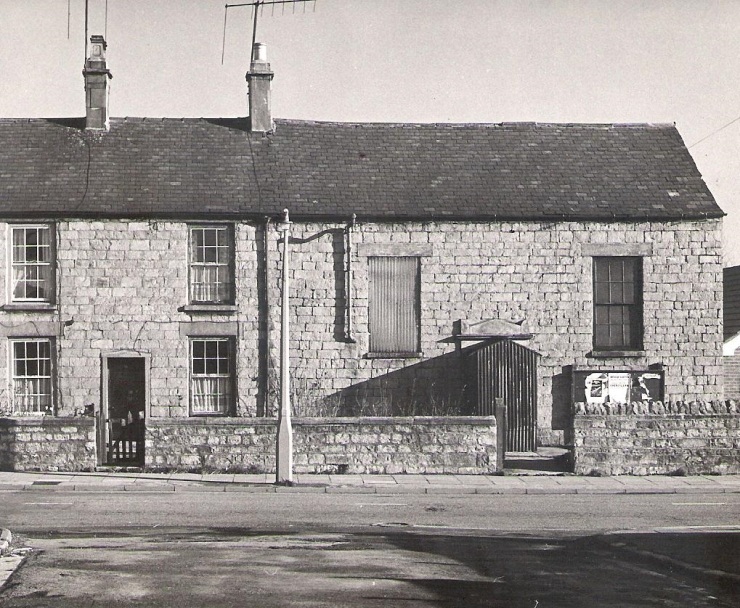
Acorn Christian Fellowship was established at Burnaby House in 1998 led by Pastor Chris Baggaley and by early 2000 meetings were being held at Robin Hood Junior School.
Just like the Baptist Church, the Congregationalists had started a mission here at Woodhouse, in 1802 but had no building of their own. They had worshipped in School Yard off High Street and later at Oxclose Lane School. However in 1908 that all changed. Foundation stones to a new purpose brick-built Congregational Church on land at Priory Road were laid by Mr W B Baggeley, Mrs D L Ritchie of Nottingham, Mrs Marchant of Mansfield and Mr Peat of Mansfield Woodhouse. Mrs A Armitage of Nottingham declared the building open which could seat 200 people. Sherwood Colliery had been opened five years before and its brickyard was in its infancy. But it is possible that the church was built using Sherwood bricks.
By the 1950s The Roman Catholic Church were looking to have a base at Mansfield Woodhouse and the Congregational Church on Priory Road became available. So in 1958 they bought the building for £2,100 called it St Charles Borromeo’s and set about furnishing it. The Curates that led the congregation from then included Fathers Alan Lynn, Brian Finnerty, Michael Tutcher, William Walsh, Denys Hancock, Geoffrey Kitchin, Joseph McGovern, J G O’Hanlon and Roger Birks. In 1983 the church celebrated its silver jubilee.
After the church closed down it later opened as a Health Care Software Systems Business. By 2009 the premises were purchased by Kidzgrove Day Nursery, who are still based there today.
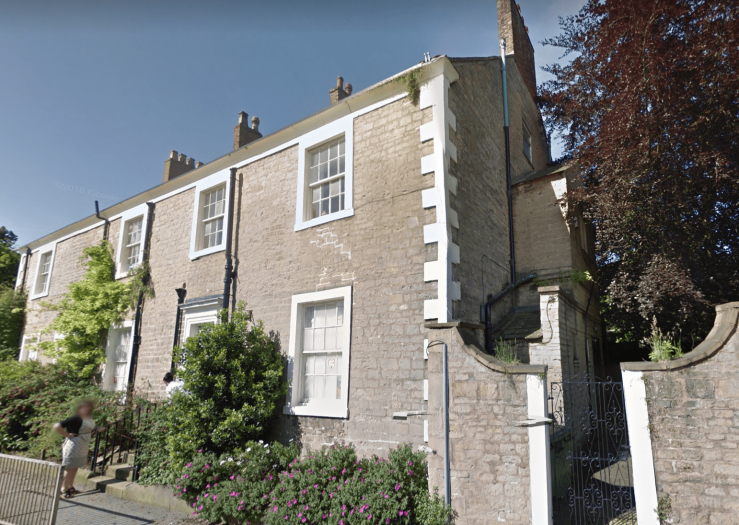
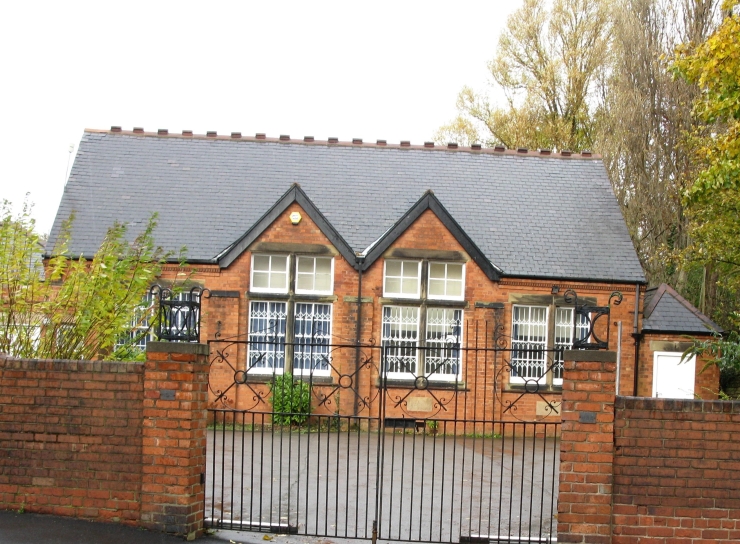
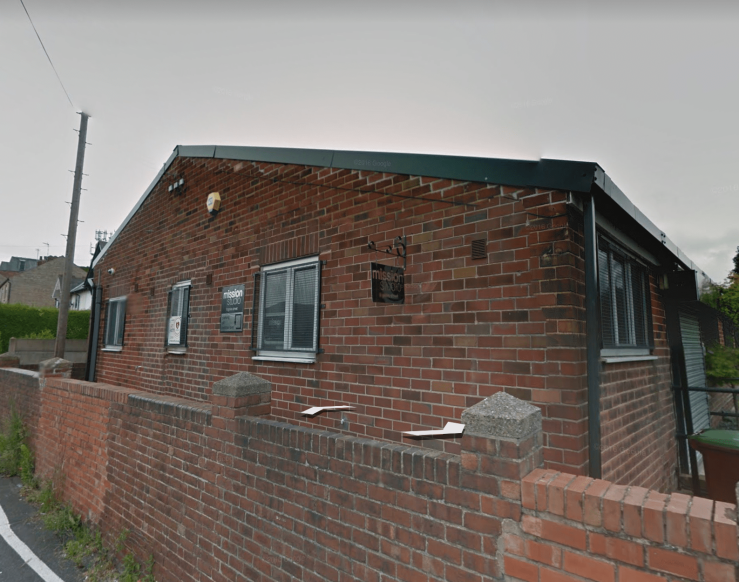

There was a Gospel Mission at ‘Fairfield’, Leeming Lane, run by Mrs Godfrey. She arranged with Bevan and Barker’s to provide a 32-seater coach for members to travel to Hucknall Park in 1937. Meetings of the NBWTAU (National British Women’s Total Abstinence Union) were held at the Mission in 1941.
Grove Street Mission (Assembly of God) started in a wooden canteen hut brought from Boughton Army Camp after the First World War. Before that they would meet in open air worship on Oxclose Lane.
Grove Street Pentecostal Church was built in 1959 and opened by Mr Sam Atkins. The members built the church themselves for about £1,500 instead of the contractor’s quoted price of £4,000. It replaced a dilapidated hut that had been erected there in 1921 and could seat 380 people. Grove Street Mission Hall was sold in 2011 and Mission Studio, a photographic studio is based there now.
The Plymouth Brethren had morning and evening services at Mansfield Woodhouse according to Wright’s Trade Directory in 1888.
There were some buildings on Castle Street named The Quaker Meeting Rooms. The Quaker Movement was begun by George Fox in the 17th Century. He travelled around the country preaching his beliefs wherever he could. When he attempted to preach at Mansfield Woodhouse Parish Church he was treated like a criminal, was stoned and beaten and locked in the stocks which were on Cross Hill, on Church Street. Eventually he was taken before a Magistrate at a nearby Knight’s house and was set free.
St Catharine’s Church was purpose built in 1911 on Sherwood Street for the miners who worked at nearby Sherwood Colliery and their families who lived in that local area. Mrs Catharine Ellis, wife of colliery chairman Mr Francis Newman Ellis, who lived at Debdale Hall, laid the foundation stone. When opened it could seat 250 people. It was built by Mr G C Percival to the Urban District Council’s surveyor Mr F P Cook’s designs and the cost was £1,020. Like the Priory Road Congregational Church it is possible that Sherwood bricks were used in its construction. To mark the church’s 21st birthday in 1932 a brass plaque was installed on an interior wall inscribed with the names of the men who died serving their country in the First World War and who had worshipped there. A branch of the Yorkshire Penny Bank was managed there by Mr L W Davis each Monday evening. It was some 40 years later in the 1950s that the church was closed and eventually reused as a base for an electrical wholesalers called FCC Electricals. Today it is known as Olive House and used for office accommodation.
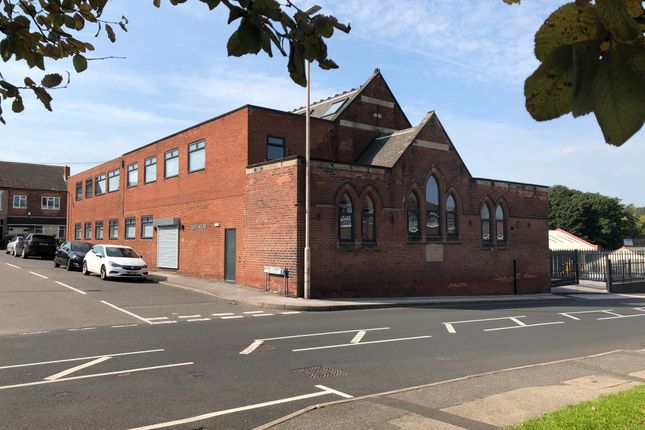
A church made of wood and named St Martin’s Church was founded on the corner of Cox’s Lane and Beech Tree Avenue in the 1950s by St Edmund’s Parish Church (artists impression opposite) but it only lasted about seven years. It was demolished and Beech Court Centre was built on the site in 1967.
Sherwood Street Gospel Mission was based at Sherwood Street Meeting Room across the road from St Catharine’s Church. Perhaps its demise came when that area was demolished in the 1970s as part of the Council’s Street Clearance and Redevelopment Project.
The Mansfield Woodhouse branch of Toc H was established in September 1949 and initial meetings were held in the stable loft above the horses at Saville House on Church Street and at the Turner Memorial Hall. Later they met at the old School House off the High Street and at Castle Street Rooms in the 1970s. By the time of their 40th anniversary in 1989 their meetings were held at Meadows Centre. They had a close association with Trinity Methodist Church, the Larches and Groves Centre and the Northfield Park Centre where they would organise harvest festivals and parties for local blind and partially sighted people. The name Toc H comes from the signalling code of the club at Talbot House, the place in Poperinge, in Belgium, where it all began during the First World War. Soldiers of any rank could meet there and be welcome and it challenged the spirituality in their lives offering an open door policy for anyone.

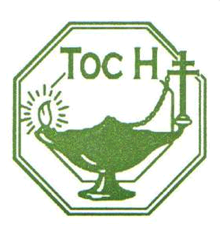
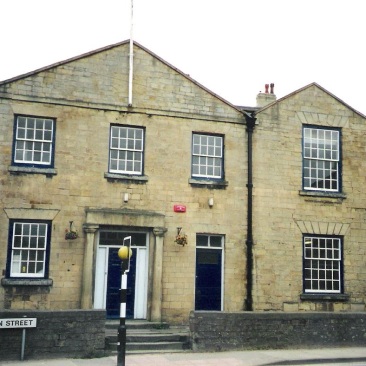
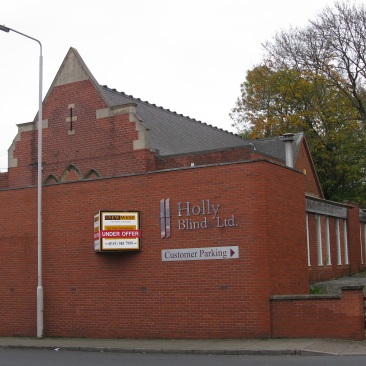
The Wesleyan Methodist Church and schoolroom, stone built with an elaborate porch entrance, was first opened in the 1830s on Station Street opposite the bottom of Swan Lane. By the early 1900s the premises were getting too small for all the people who congregated there. A room in Castle Street had to be rented to accommodate the increase in numbers of Sunday school children. By 1904 a piece of land was secured further up Station Street opposite the present Post Office and fundraising for a new brick-built church began. The cost of the land and the building and the boundary wall was £1,800. It was understood that the new Sunday school would accommodate about 350 children and the new church could seat 280 people. Foundation stones were laid in 1911 by Miss Alcock, Mrs Lewis, Mrs C Houfton, Mrs Haslam for the Ladies’ class, Mr L G Mallatratt for Sunday School, Mr T. Farmer for Men’s Bible class, Mr C R Strutt, of Newquay, Mr W. Reason for Mr W E Housley, Mr F P Cook, Mr Haslam, Mr Nixon and Mr Blythe. The builders were a local firm Messrs G & J W Stevenson and the architect was Mr F P Cook.
The new Wesleyan Methodist Church forged ahead and saw almost 50 years of worship there before it closed in April 1958. Since then the building has been home to Eaton’s Clothing Manufacturers, Holly Blinds Ltd and most recently has been converted to the headquarters of the Lincolnshire and Nottinghamshire Air Ambulance Charitable Trust Furniture and General Store.
What happened to the original Wesleyan Methodist Church you may ask. Well Mansfield Woodhouse Urban District Council decided to purchase the old church and school and the builder was instructed to start the conversion into the Council’s Public Offices on 1st February 1912. But by 1933 The Manor House on Priory Road was vacant and the UDC decided to purchase that for their new offices. The old church later saw life as a branch of the National Provincial Bank and as offices for Muschamp’s engineering firm. It has now been developed as a set of apartments.
If you have any further information or photos to add to this article we would be very pleased to hear from you.
CREDITS AND SOURCES: MANSFIELD CHRONICLE NEWSPAPERS, MANSFIELD CHAD NEWSPAPERS, PEOPLE’S MEMORIES, OS MAPS, TRADE DIRECTORIES,
UDC MINUTES, BEVAN AND BARKER’S CONTRACTS BOOK, THE INTERNET, WIKIPEDIA, DOCUMENTS, PHOTOGRAPHS AND ARTEFACTS IN
THE OLD MANSFIELD WOODHOUSE SOCIETY ARCHIVE.
